The Ultimate Guide to House Styles in Wisconsin
Estimated Reading Time : 7 Min.
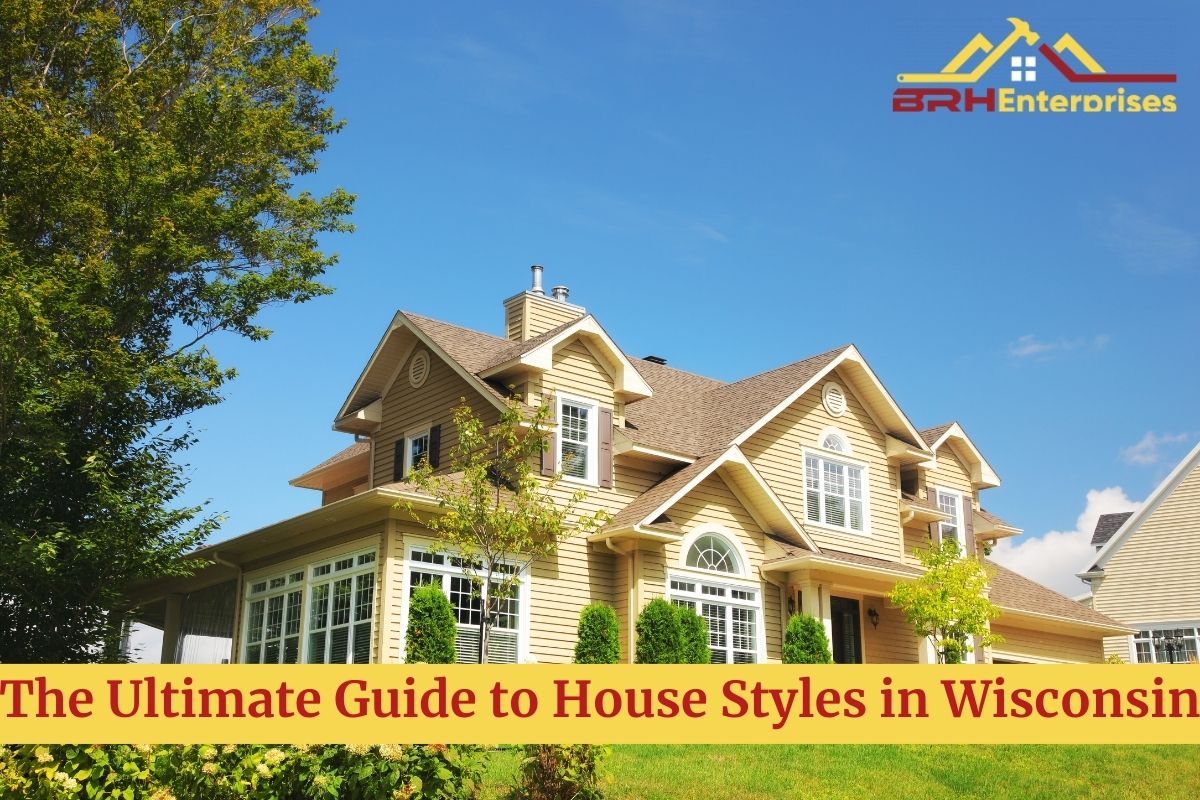
Influenced by a variety of historical, cultural, and environmental factors, Wisconsin’s architectural landscape is as diverse as its geography. The state offers a vast range of house styles that reflect its distinct heritage, from modern contemporary designs to traditional colonial homes.
In this blog post, we’ll explore the well-known and recognizable house styles that characterize Wisconsin’s towns and cities as we delve into the state’s architectural history.
Wisconsin’s Architectural Heritage
Wisconsin has numerous architectural styles that blend historical and immigrant influences. Architecture in the state has changed dramatically over time, moving from wooden Victorian-era structures to designs created after World War II. This evolution is reflected in the intricate details and asymmetrical exteriors of Victorian homes as well as the commercial buildings that use Italian-style and commercial vernacular architectural styles.
Immigrants from around the world have also left their mark, influencing both design and building materials. Famous architects like César Pelli and Marshall Erdman have left an impression on Wisconsin’s architecture with their noteworthy constructions.
In order to protect its historic treasures and inform the public about their significance, the state continues to embrace monumental architecture while placing a strong emphasis on preservation efforts.
Well-Known and Historic House Styles in Wisconsin

#1. The Historic Cream City Brick Houses
Wisconsin’s famous Cream City brick houses are a symbol of the state’s rich architectural history. Cream-colored bricks were used to build these historic homes, which are prized for their toughness and distinctive design. Milwaukee got its nickname, Cream City, from the popularity of these bricks during the 19th century, which came from clay found close to the city. These bricks have light colors at first, but they darken with time due to their porous nature.
With elaborate window casings and elaborate cornices, these homes are a testament to historical style and expert craftsmanship. These properties are meticulously restored through urban renewal initiatives, safeguarding Wisconsin’s architectural heritage. The original charm is preserved by carefully maintaining every brick and component. In addition to being significant architecturally, Cream City brick houses symbolize Wisconsin’s dedication to preserving its cultural legacy.
#2. Scandinavian-Inspired Homes in Door County
In Door County, Wisconsin, houses with a Scandinavian architectural style harmoniously combine the area’s scenic surroundings with Nordic designs. Whether located near the shore, where old-fashioned coastal cottages blend in perfectly with the scenery of Lake Michigan, or tucked away in the forests, where cozy cabins await.
These homes are characterized by their uncluttered lines and practical design. Encouraging both residents and guests to immerse themselves in a distinctive fusion of cultural heritage and modern living, these homes feature open, airy interiors and rustic woodwork, reflecting the Scandinavian connection to light, nature, and peace.
#3. Influence of German Architecture
Wisconsin’s architectural identity has been significantly shaped by German influence, especially in areas where German immigration has been substantial. The blending of local architectural trends with traditional German design elements has produced a unique fusion that reflects Wisconsin’s architectural development as well as the cultural legacy of the German settlers.
Not only do prominent elements of German architecture, like steep roof lines and intricate woodwork, add visual appeal to many Wisconsin homes, but they also work well with the state’s climate and topography. Furthermore, practicality is valued above all else in German-influenced homes, which feature roomy interiors and sometimes even cellar areas that capture the spirit of German home brewing. German architecture is also reflected in the structure and aesthetics of public buildings such as churches and schools.
#4. Prairie School Style: A Wisconsin Signature
Known for its organic design principles, simplicity, and harmony with nature, Prairie School style buildings are a defining aspect of Wisconsin’s architectural legacy. Because of its exquisite blending of this avant-garde design with the surrounding landscape, it has become a Wisconsin classic. The idea of blending in with the surroundings and designing living areas that coexist peacefully with nature is fundamental to Prairie School architecture.
The style creates a smooth transition between architecture and the natural environment with its horizontal emphasis and wide, flat structures that reflect the vastness of the Midwestern landscape. In addition, Prairie School architecture places a high priority on sustainability, with low-slung structures and overhanging eaves designed to reduce energy use for heating and cooling.
#5. Modernist Homes in Madison
Madison’s modernist homes provide an alluring fusion of style and function, with clean, simple lines and minimalistic decor that complement urban settings. Living spaces in these homes are calm and uncomplicated, as minimalist interiors often stick to the ‘less is more’ philosophy.
Sustainable elements like solar panels, double-glazed windows, and high-quality insulation put an emphasis on energy efficiency, and integrated smart technology makes it easy to control the lighting, temperature, and security systems. Madison’s modernist homes demonstrate how modern architecture can improve both aesthetics and environmental consciousness, revealing the seamless fusion of sustainability and beauty.
#6. Log Homes: Wisconsin’s Rustic Charm
Wisconsin’s log homes offer a peaceful escape with their rustic charm and natural beauty. These cozy cabins often feature sturdy timber walls and inviting fireplaces, seamlessly blending indoor and outdoor living. Situated by lakesides, many provide stunning views and easy access to water activities. Their warm interiors and rugged exteriors strike a perfect balance between luxury and simplicity, making them ideal for reconnecting with nature and unwinding amidst serene surroundings.
Popular Architectural Styles in Wisconsin
Wisconsin’s diverse architecture, from ranch to Victorian-styles, reflects its rich history and cultural influences. Let’s delve into the unique features of different architectural styles seen in Wisconsin neighborhoods.
1. Ranch Style:
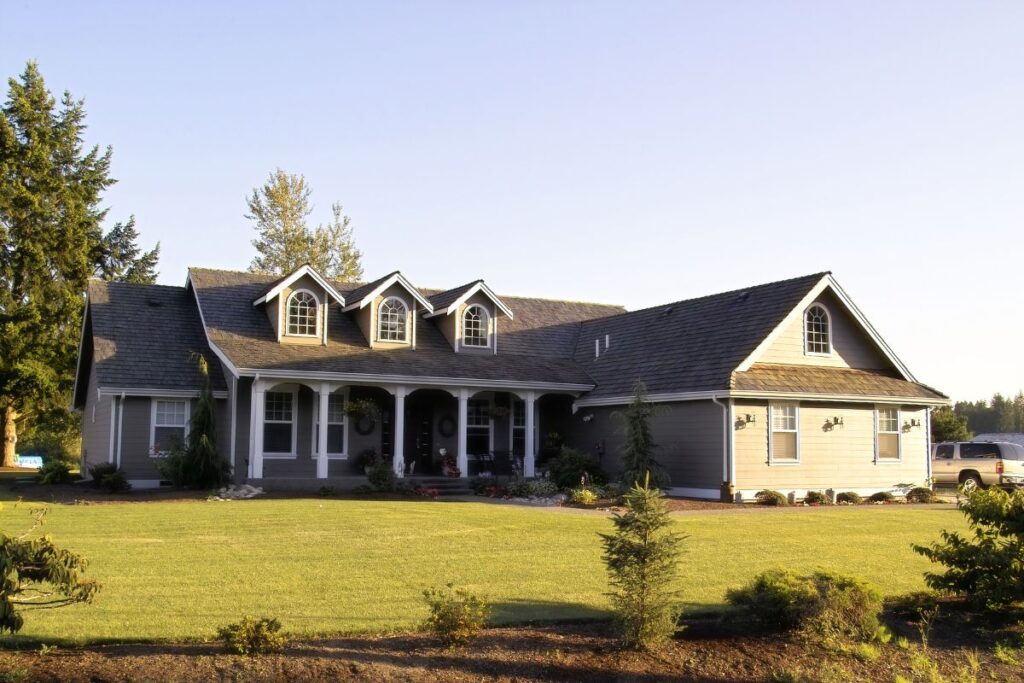
Ranch-style homes are prevalent in Wisconsin’s suburbs, offering functional and comfortable living. These single-story dwellings feature open floor plans for spaciousness and easy outdoor access. With large windows and properly pitched roofs, ranch homes are designed to suit Wisconsin’s climate, making them a popular choice for cozy living.
2. Bungalow Style:
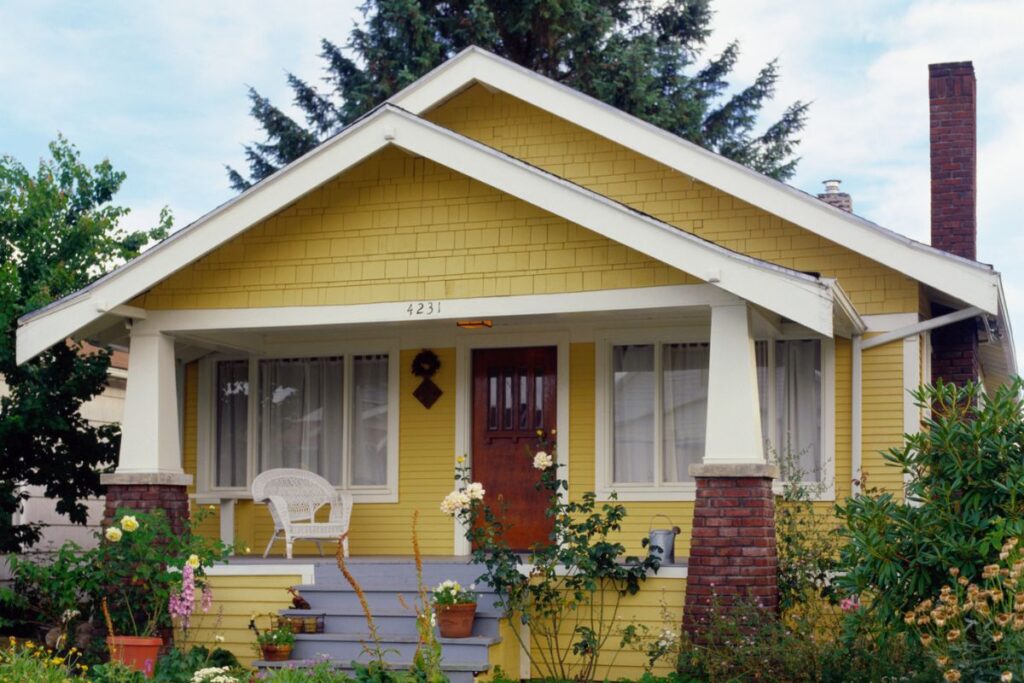
Bungalow homes in Wisconsin evoke nostalgia with their low-pitched roofs and inviting front porches. Influenced by prairie school architecture, they prioritize craftsmanship and natural materials, creating warm and welcoming spaces cherished for their classic charm and character.
3. Victorian Style:
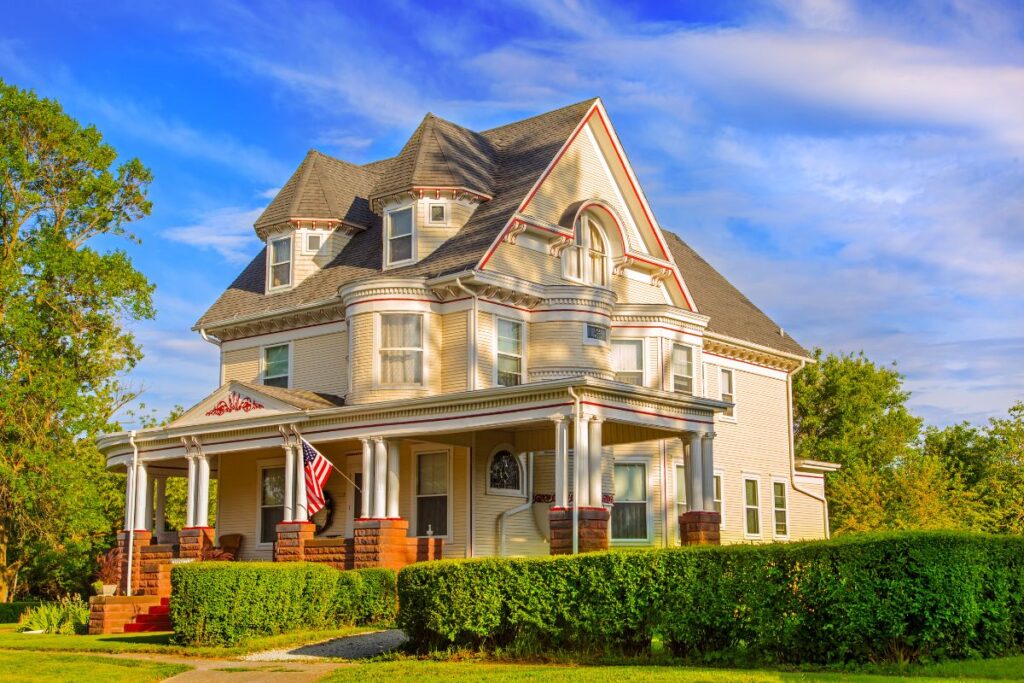
Victorian architecture thrives in Wisconsin, showcasing substyles like Queen Anne and Italianate. These homes are known for ornate details, asymmetrical facades, and vibrant colors, reflecting an era of opulence and creativity. The intricate craftsmanship of Victorian homes captivates residents and visitors alike, adding whimsy and grandeur to the state’s architectural landscape.
4. Shingle Style:
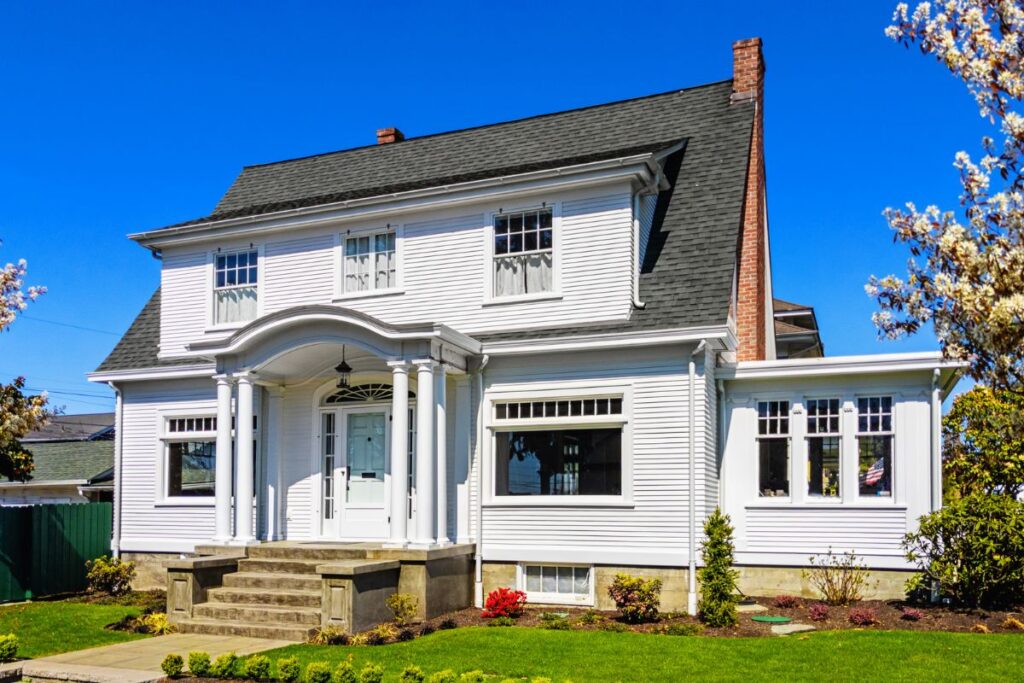
Wide porches, asymmetrical rooflines, and shingle siding are characteristics of this home style. Shingle style architecture radiates classic beauty that blends in with Wisconsin’s natural surroundings, emphasizing natural materials and blending in with the surroundings.
5. Tudor Style:
Wisconsin’s Tudor-style homes, which are primarily located in communities like Wauwatosa and Shorewood, give the state a charming medieval English feel. These homes combine history and functionality with their steep roofs that manage snow well, ornamental half-timbering, and tall windows that let in an abundance of natural light. They are English in origin and made a resurgence in the early 1900s, giving Wisconsin’s architectural landscape a sentimental feel.
The Legacy of Frank Lloyd Wright in Wisconsin
Wisconsin native Frank Lloyd Wright had a significant impact on the state’s architectural landscape, influencing housing trends even now. Based on his ‘organic architecture’ philosophy, his inventive designs prioritize harmony between humans, the environment, and buildings.
His Usonian homes, which are made to be reasonably priced and open to everyone, and his prairie style homes, which have sweeping horizontal lines that mimic the Midwest’s level terrain, are clear examples of this philosophy. Wright’s influence on architectural trends is not limited to Wisconsin, it is felt across the country. His creations serve as prime examples of how architecture can both reflect nature and the human spirit.
Factors To Consider When Choosing A House In Wisconsin
- Location: The neighborhood vibe, proximity to amenities like schools and shopping centers, and overall environment are vital factors to think about. Make sure the location aligns with your lifestyle and needs.
- Style of Property: Whether it’s a single-family home, condo, or townhouse, the property type affects your living experience. The size, layout, and design should match your preferences.
- Additional Features: Think about the number of bedrooms and bathrooms, garage space, storage options, and yard size that you need. Prioritize specific features to find your ideal home.
- Budget: Set a clear budget considering not only the purchase price but also ongoing costs like taxes, maintenance, and utilities. Factor in climate-related expenses to ensure your budget covers all aspects.
- Climate Considerations: Wisconsin’s seasonal variations impact home construction and maintenance needs. Plan for features like heating, insulation, and energy efficiency to keep your home comfortable and cost-effective year-round.
- Property Taxes: Wisconsin has relatively high property taxes. Include tax costs in your budget planning to avoid financial surprises.
- Construction Costs: If you are planning to do work on the home, labor, materials, permits, and builder selection influence construction costs. Budget accordingly and research builders thoroughly to ensure quality work and customer satisfaction.
- Builder Selection: Choose a reputable builder with the necessary certifications and experience. Check references and past projects to ensure your home construction project is successful and safe.
Conclusion
The architectural evolution of Wisconsin is reflected in the diverse range of house styles that have emerged over the years, from the practicality of early settlers to the latest innovations in modern design. Every home is a symbol of the diverse cultures that have been interwoven into Wisconsin’s past. By exploring the development of these architectural treasures, we are able to gain a greater understanding of Wisconsin’s varied architectural landscape by learning about not only their distinctive qualities but also the craftsmanship and stories that have gone into their creation.
A key component of protecting and improving these architectural treasures is collaborating with professionals such as BRH Enterprises. With a dedication to quality and an in-depth knowledge of Wisconsin’s architectural legacy, we provide roofing solutions that fit the various needs and styles of each and every house. Homeowners who choose BRH Enterprises invest in high-quality roofing services while also helping to preserve Wisconsin’s rich architectural history. For the best roofing services give us a call at (920) 249-4228.


